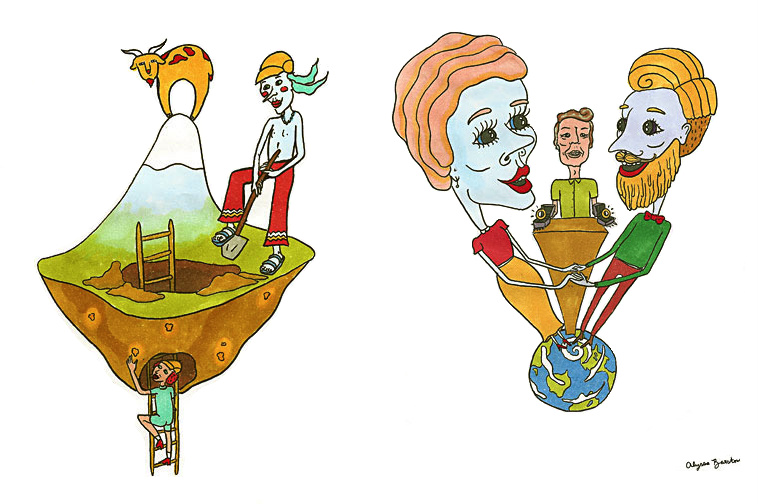Fairtrade / Fairmined goud in de US / UK
Dit artikel is geschreven als een aanvulling op deEthische Sieraden Exposé. Het is een persoonlijk verslag van de ethische goud beweging, zijn oorsprong en geschiedenis als geboren in het Verenigd Koninkrijk en ingewijd in de Verenigde Staten, over een periode van ongeveer de laatste tien jaar.
Beginnen: deze dagen, we hebben twee hoofdsponsors van ethische goud uit kleinschalige mijnbouwers. Fairtrade en Fairmined vertegenwoordigen twee duidelijk verschillende organisaties.
Fairmined:
Fairmined komt uit deAlliance for Responsible Mining (de Alliance). De Alliance is een baanbrekende wereldwijde organisatie die een pionier in het bijstaan van de kleinschalige goudwinning gemeenschappen in de implementatie van best practices.
De Alliance biedt essentiële technische bijstand aan kleinschalige mijnbouw gemeenschappen, en levert de expertise die de milieu- en sociale normen die zijn opgesteld die manier konden de mijnwerkers een product op de markt onder hun controle systeem tot stand te brengen. Het Bondgenootschap heeft ook zetten kleinschalige mijnwerker vertegenwoordigers op hun bord.
De Alliance for Responsible Mining is een gecentraliseerde organisatie, gevestigd in Colombia. Ze hebben een Memorandum of Understanding met de Responsible Jewellery Raad in hun pogingen ondertekend.
Fairtrade:
Fairtrade is een van de meest bekende wereldwijde merken. Er is een goede kans dat u dit logo herkent:
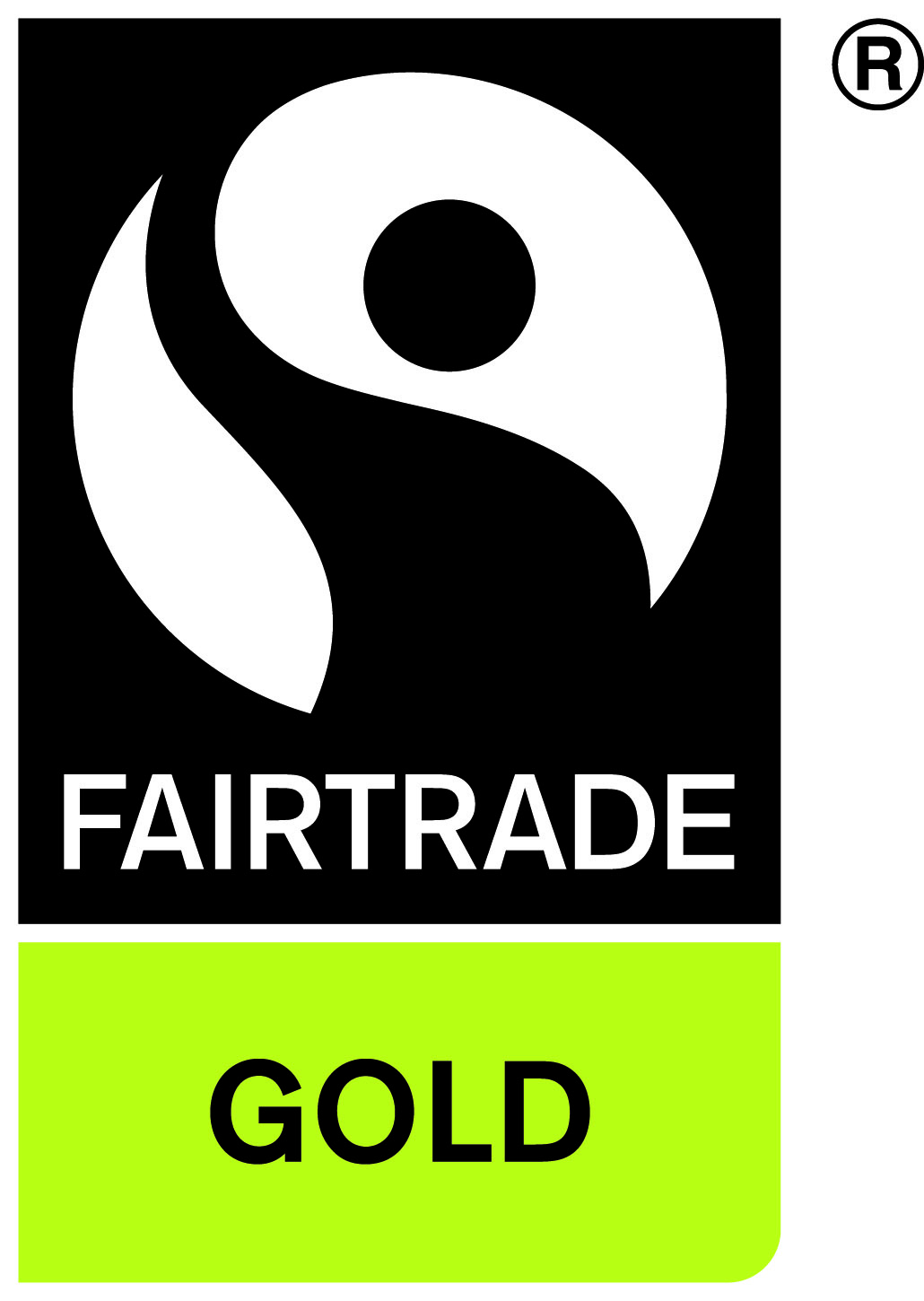
Fair trade is een sociale beweging op basis van een brede reeks beginselen gecentreerd rond billijkheid, op niet te profiteren van producentengemeenschappen.
De term “fair trade” kan door iedereen worden gebruikt in elke context, en toegepast op consumenten producten zonder onderscheid-betekent dat het kan bedrieglijk worden gebruikt door een bedrijf dat wil om het merk zich met zorg en medeleven voor de producenten.
"Eerlijke handel," aan de andere kant, is een handelsmerk merk dat baseert haar ethische geloofwaardigheid op een strikte controle protocol afgedwongen doorFairtrade International (FLO). Fairtrade International bestaat uit een soort confederatie van Fairtrade organisaties die onafhankelijk bestaan binnen elk land (bijv.Fairtrade UK). FLOCert is de certificatie-instelling die verantwoordelijk is voor de controle van de supply chains van alle gecertificeerde Fairtrade-producten.
Het is FLOCert die onafhankelijk biedt, verificatie van derden die Fairtrade normen wordt bevestigd door retailers, fabrikanten, en boeren-of, in the case of gold, mijnwerkers. FLOCert is gevestigd in Bonn, Duitsland. Ze werken aan “te verzekeren eerlijkheid.”
Fairtrade / Fairmined Gold Launch
Fairtrade / Fairmined Gold was een radicale doorbraak op meerdere fronten. Hier zijn een paar kritische elementen.
Eerste: van een sieraden handel oogpunt, weinig zou zelfs kunnen voorstellen dat er traceerbaar en transparant goud voordat deze Alliance op de markt gebracht van kleinschalige mijnbouwers for Responsible Mining / Fairtrade samenwerking zou kunnen zijn. Buiten zeer niche initiatieven, such asWelsh goud, geen gouden supply chain ooit traceerbaar of transparant.
Tweede: tot op dit moment, Fairtrade had alleen gecertificeerde landbouwproducten. Voor hen om te certificeren een gedolven metaal was een enorme sprong.
Maar er was nog een kritische katalysator alsook: UK juwelier Greg Valerio, die had gewerkt aan gouden zaken sinds het midden van de jaren 1990. ZijnOro Verde ervaring leidde hem tot co-vond de Alliance for Responsible Mining.
Fairtrade creëerde een normen en beginselen ontwikkelingsproces, die de Alliance for Responsible Mining op-de-grond werk gecodificeerd in een audit proces van de mijnwerker naar de juwelier. Dit document betrokken zijn tal van mensen. Om te zeggen het was een enorme hoeveelheid werk en een enorme verplichting vooraf door Fairtrade zou een understatement zijn.
Zelfs nadat dit werd gedaan, het proces moest worden getest in de markt.
US Fairtrade / Fairmined Initiatives
In 2009, I samen met Christina Miller, ED ofEthische metalsmiths-een Noord-Amerikaanse organisatie die pleit voor sociale en milieukwesties en voornamelijk bestaat uit kleine studio ethisch-minded juweliers.
Met het doel van het bouwen van een Amerikaanse beweging, Miller en ik gesponsordthis 2011 ontmoeten bij mij thuis in Santa Fe, die veel van de belangrijkste beïnvloeders in de Noord-Amerikaanse ethische sieraden bol gehost.
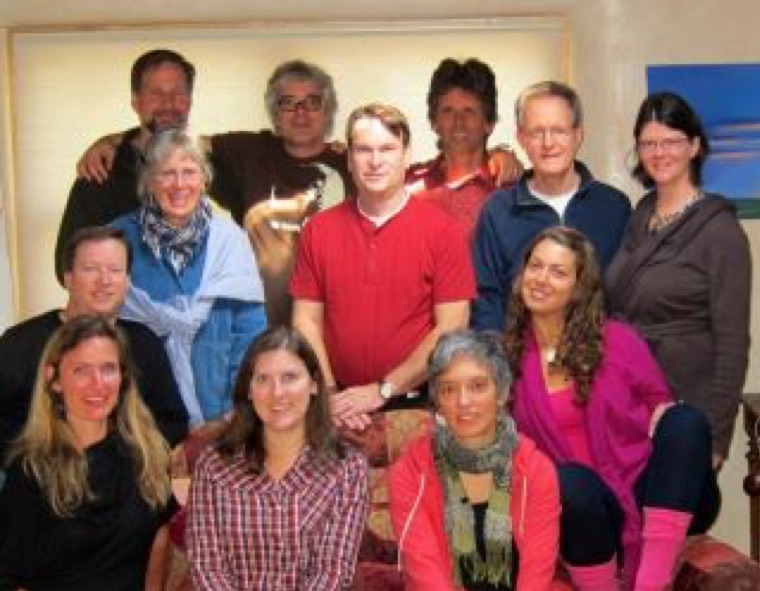
Onze verklaarde resultaat van de bijeenkomst was om breed te introduceren Fairtrade / Fairmined Gold op de Amerikaanse markt.
Na deze bijeenkomst, Miller voerde een marktstudie van potentiële Fairtrade / Fairmined juweliers voor Maya Spaull, die wel productontwikkeling voor Fairtrade USA. Ze werkte met Fairtrade UK. Fairtrade Gold had al gelanceerd in het Verenigd Koninkrijk. We werden vergezeld door ethische juwelier Toby Pomeroy.
Het gevoel bij deze bijeenkomst was dat de uitdagingen waren geweldig, maar de Amerikaanse markt was vol mogelijkheid om initiatieven die de gelegenheid geboden om ASM gemeenschappen. The destination was Fairtrade/Fairmined Gold. We had the hope that this program could launch in the US, through Fairtrade USA, perhaps within a year.
Molenaar, Pomeroy, and I spent a huge amount of time strategizing on how we might create a viable market initiative.
Then, things fell apart.
Two Schisms
In any retrospective view of events, one can pick out clear turning points.
But for those of us who were focusing on concerns of producer communities with basic principles of fair trade as a guiding light, “schism” is the appropriate term.
In 2011, just a few weeks before the earlier-referenced meeting at my house in Santa Fe, Fairtrade USA split from Fairtrade International. Suddenly, there was no Fairtrade organization in the US.
Fairtrade USA had de onafhankelijke Fairtrade organisatie die actief is in de grootste markt van Fairtrade International geweest, the US. Dus dit split was-om het zacht uit-een grote uitdaging zetten. Fairtrade USA ontwikkelden hun eigen label, en nam belangrijke zakelijke weg van Fairtrade International, die hun platform verloren in de VS..
Deze splitsing was gedeeltelijk te wijten aan een debat over wat “echte” fair trade vormt. Het is eengrootschalig versus kleinschalig debat.Fairtrade USA wilde vrij zijn om grote koffie te certificeren om Starbucks te leveren. Anderen in de beweging vond dat Fairtrade moet zich richten op het ondersteunen van kleinere producenten.
oplossing Fair Labeling op het moment was om hun Amerikaanse activiteiten van het tijdelijk beherenFairtrade Canada.
achteraf, deze splitsing tussen Fairtrade VS en Fairtrade International was een grote klap voor de ethische sieraden markt. Noem het collateral damage. U zult meer begrijpen als je verder leest, maar laat ik alleen zeggen nu dat de grootste slachtoffers van deze split waren kleinschalige goudzoekers over de hele wereld.
Had deze breuk niet optrad, het is heel goed mogelijk dat de VS momenteel zou een Fairtrade Gold markt veel groter dan wat er op dit moment bestaat in het Verenigd Koninkrijk, die meer dan 200 Fairtrade juweliers.
Maar zonder een Fairtrade organisatie in de VS, of een fabrikant voor juweliers leveren, er was geen mogelijkheid om de lancering van een Fairtrade / Fairmined Gold programma.
In 2011, Ik begonnen met het importeren en verkopen van sieraden gemaakt van Fairtrade Gold verscheept over uit het Verenigd Koninkrijk.
Wezen, het business plan, de marktstudie gedaan van goed vertrouwen in een poging om een beweging in de Verenigde Staten te creëren, werd thanklessly buitenspel gezet. Over time, degenen onder ons werken in de richting Fairtrade / Fairmined Gold kwam tot het besef dat de aanzienlijke basis, met inbegrip van een onderzoek en marktstudie gedaan op verzoek van Fairtrade UK en Fairtrade USA, was tevergeefs.
Fairtrade Gold als een initiatief van de VS dood in het water was.
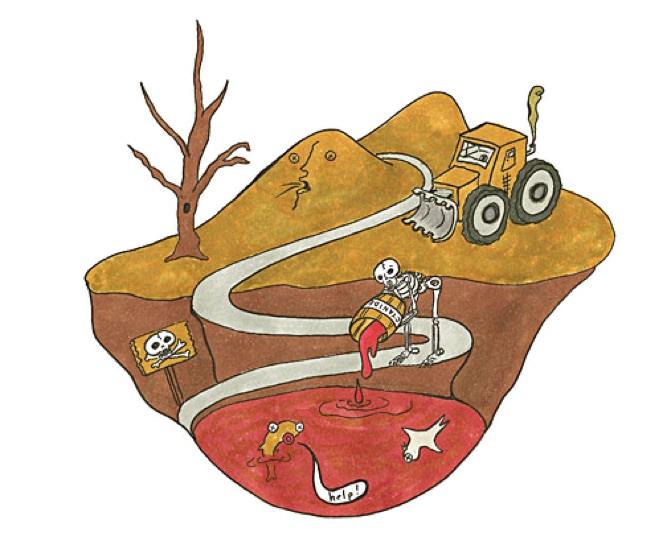
De tweede Schisma
In April 2013,De Alliance for Responsible Mining (Fairmined) en Fairtrade International gekloofd.
Er was een enorme hoeveelheid van de politiek in het spel in deze. Een primaire oorzaak van de scheuring was de Alliantie voor de betrokkenheid van Responsible Mining met deResponsible Jewellery Raad, wat resulteerde in een formelememorandum of understanding tussen de twee.
Deze opstelling niet om de Alliance for Responsible Mining certificeren van grootschalige mijnbouw, maar eerder een duidelijke verschuiving in hun tactiek: een samenvoeging van wat een radicale kleinschalige advocacy adviesbureau met grote mijnbouw belangen waren geweest.
Zes jaar eerder, at theMadison Dialogue ontmoeten bij de Wereldbank, een alliantie tussen de Alliance for Responsible Mining en een organisatie als de Responsible Jewellery Raad zou uit zijn geweest van de vraag. Een persoon die betrokken zijn bij de onderhandelingen gezegd dat de vergadering had bijna uiteengevallen dan verschillen slechts enkele dagen voor het evenement. Nu is de Alliance for Responsible Mining was het werken met de bedrijven die ze ooit zouden hebben verzet.
Dappere nieuwe wereld
At the time, Ik geloofde dat de relatie van een model voor samenwerking tussen groot zou kunnen zijn- en kleinschalige mijnbouw belangen, het verhogen van het profiel van de producent gemeenschappen en het creëren van echte veranderingen in de markt. Plus, the access to the Responsible Jewellery Council network would allow the Alliance for Responsible Mining access to greater funding for their work.
Alliance for Responsible Mining board member Patrick Shein, in a Paris meeting, asked me if I wanted to join the Alliance board. In 2009 we had traveled together to Mexico to look at possibilities for Fairtrade Silver mining. I declined the offer and suggested Toby Pomeroy, who has served on Alliance for Responsible Mining’s board since.
Fairmined/Fairtrade Gold was now two distinct programs: Fairmined Gold (Alliance for Responsible Mining) and Fairtrade Gold (FLO/Fairtrade International).
Fairtrade Gold is a product within a broader international fair trade movement. The focus is on producer support, kleinschalige mijnbouw, and grassroots economic development.
In tegenstelling, Fairmined Gold was now deeply embedded in the larger mainstream corporate jewelry sector—the purview of large-scale mining and their retail partners.
The Alliance for Responsible Mining and Fair Labeling International went from being collaborators to competitors.
Fairtrade had to leverage their international network to create their own capacity-building programs. In addition to maintaining relationships in South America, they focused specifically on the African small-scale mining sector, where other strong Fairtrade programs were already in existence. This work was often funded through grants such asComic Relief.
The Alliance for Responsible Mining continued their capacity building work with miners, now with the assistance and resources of the Responsible Jewellery Council, whose members spanned the gamut from mining companies to retailers.
It should be noted that, at the actual mine itself, there is no significant difference between Fairmined Gold and Fairtrade Gold standards around labor, veiligheid, environment, etc..
Regardless…in the UK, where gold from small-scale miners was already building momentum, jewelers were faced with a choice: Fairmined Gold or Fairtrade Gold?
The UK Fairtrade Gold Movement
In het Verenigd Koninkrijk, jewelers have chosen Fairtrade Gold over Fairmined Gold.
Let me pause here, because comparing the UK and US is a study of profound contrasts that is central to the Exposé.
Duidelijk, these are two very different markets. Nog, jewelers in the UK and US tend to share a number of similar trends.
In het Verenigd Koninkrijk, the Fairtrade movement (chocolade, koffie, bananas, etc.) was already very strong before the arrival of Fairtrade Gold. The strength of this market meant that a new Fairtrade initiative had fertile ground.
By 2013, several large and reputable UK supply houses were already providing Fairtrade Gold mill products.
Large retail trading groups had come on board as well.
Bij voorbeeld, in May, 2015, I traveled to Africa with Willie Horton—then CEO of theCompany of Master Jewelers, a buying group of over 150 mainstream retail jewelers. We visited gold mines in Tanzania and Kenya. Horton went back to the UK and strongly advocated for Fairtrade Gold to his consortium.
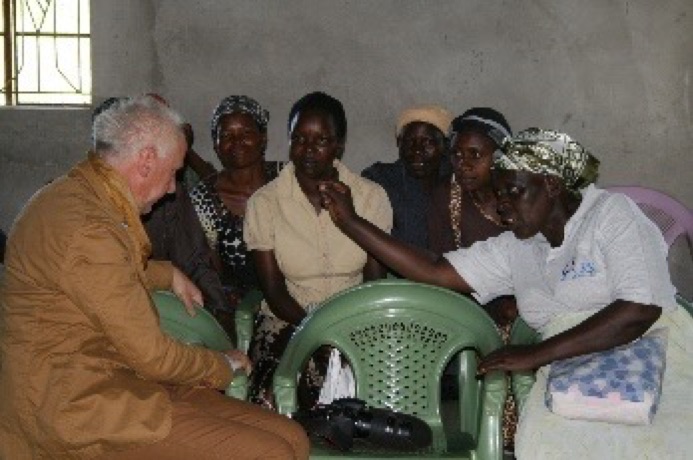
Over 200 jewelers have now entered the UK small jeweler scheme (outlined below) for free, selling Fairtrade Gold as part of their product line. Another seventy-plus have joined as formal license holders.
Alan Frampton, from Cred Sources, one of the true heroes of the Fairtrade Gold movement, has created a solid supply chain from the mines to jewelers and supply houses—an extraordinarily difficult task. He reports that sales in 2016 en 2017 amounted to 30kg of gold. In the first six months of 2018, 28kgs of Fairtrade Gold were imported to the UK—almost as much as all of 2017.
This upward momentum is strongly supported by Fairtrade UK, as evidenced by a cursory glance at their website:

Fairtrade UK also provides marketing and media material to jewelers—such as in their 2018“Fairtrade Fortnight.” Also offered is theirFairtrade Gold Ambassador Training Course.
Consider also that the UK-based trade magazineProfessionele Juwelier named Fairtrade Gold amajor trend of 2017. Fairmined, which has approximately 36 UK jewelers, is not mentioned.
In August, 2018, Cred Sources made its largest gold bar purchase ever:
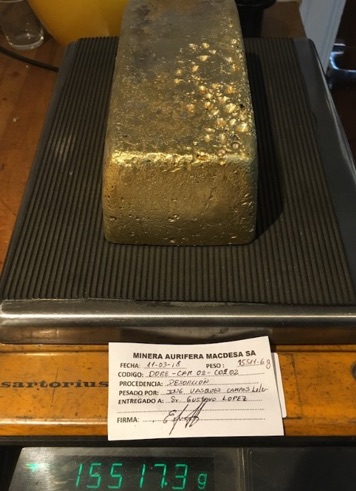
InProfessionele Juwelier, Frampton remarks: “We have fantastic relationships with everyone, from those in the supply chain to all our customers. This is crucial to satisfy consumer demand. There is enough gold in this bar to produce 6,300 trouwringen. Fairtrade Gold is coming of age.”
Fairtrade and Fairmined in the USA
In oktober, 2013, Christina Miller and I were invited to London to attend a Fairtrade gold meeting. By this time, Fairtrade UK had already gained some momentum among small jewelers. Yet a certification process for Fairtrade Gold jewelers in the US was not even on the immediate horizon.
Inderdaad, a month before, Miller and Pomeroy had led the Ethical Metalsmiths community—with the support of North America’s most ethical jewelry supply house, Hoover en Strong—to launch Fairmined Gold to the US market.
Looking back, the decision of EM to endorse Fairmined Gold was like a small pebble moved at the top of a mountain which changes the course of a river.
In het Verenigd Koninkrijk, small pioneer ethical jewelers were the seed that moved the jewelry industry toward a vibrant Fairtrade Gold market, creating a new consumer narrative linking ethical jewelry to Fairtrade.
Likewise, it was the small jewelers who were the change agents in the US. They did not have to answer to a board of directors, but only to their own personal integrity and convictions.
With their Fairmined initiative, Ethical Metalsmiths took a more prominent ethical jewelry leadership position in the US.
With the support of the larger studio jewelry community, they became their own non-profit, with a board of directors and in doing so no longer needed Earthworks, an organization highly critical of the Responsible Jewellery Council, as their non-profit sponsor.
Nu, because of the Alliance for Responsible Mining’s close ties to the Responsible Jewellery Council, Ethical Metalsmiths were more naturally aligned with the mainstream jewelry sector.
The introduction of Fairmined Gold led to mainstream press publicity. Brilliant Earth joined the Fairmined scheme. This would be the beginning of a new era—one of gold that benefitted the small-scale global mining community and could perhaps even refocus the forward-facing consumer narrative toward concern for producer communities.
Fairtrade offered nothing to counter Fairmined’s dominance in the US market. Yet I stuck with it, importing Fairtrade Gold—for few reasons. Fairtrade itself is aligned with a powerful and transformative international movement, including coffee, chocolate and other agricultural products. It is also one of the best known global brands. And, Fairtrade certifies everyone along its path, from miners to jewelers. Additionally, having followed the politics of the jewelry industry for nearly seven years at the time, I considered any relationship to the Responsible Jewellery Council a reputational risk.
Fairmined in the US Market
Let’s now leap forward and consider Fairmined Gold’s impact in the US, just as we did in considering Fairtrade Gold in the UK.
There are approximately 45 jewelers in the US who use Fairmined Gold.
Op dit punt, given the number of years and the momentum that Fairtrade Gold in the UK had five years into their program, you would think that there would be something corresponding in the US. Nog, on Ethical Metalsmith’s online forum over the past year, I’ve seen posts such as this…
In a March 16th, 2018 post to this forum, one jeweler wrote:
“I spoke with them (a casting company) about casting Fairmined and they said I would need to send them an ounce of 24kt that they would use for my casts. I’ve never used them before so I’m a bit hesitant to send them an ounce of 24kt. Do you think I misunderstood their process?"
Another jeweler responds, “I checked their website for certificates—a Responsible Jewellery Council certification is set to expire on March 25. And the green gold certificate is outdated.”
These posts speak to one major difficulty in manufacturing with ethical gold that applies to both Fairtrade and Fairmined:
How does a small studio deal with customers ordering 14K or 18K yellow, white, or rose gold? Due to the nature of the casting process, each run requires extra gold—and you end up with multiple Fairtrade (or in the case of this jeweler, Fairmined) samples that need to be refined back to pure gold.
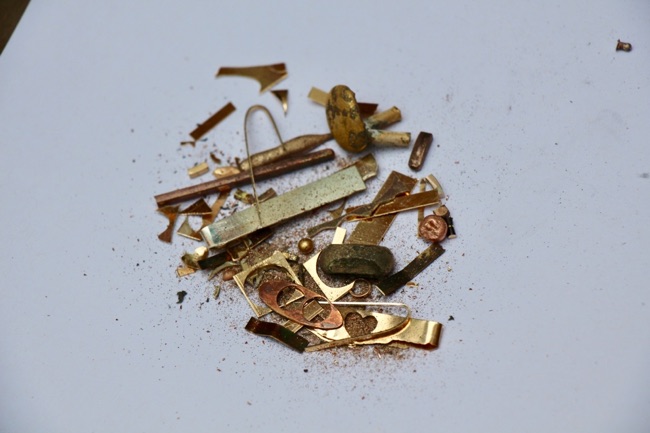
Wezen, this ties up a lot of money—cash flow often needed to keep operations going. Having to keep enough scrap Fairtrade Gold in the safe to refine is a problem that jewelers in the UK who have casting houses do not have to contend with. Yet as a manufacturer, I have had to stock tens of thousands of dollars of Fairtrade Gold, just to be able to produce our products.
This should not be how casting works with Fairmined Gold—they are working as a consortium and are five years into the launch. Contrast this situation with that of the UK.By July of 2014, just three years after the launch of Fairtrade Gold, five of the UK’s leading casting houses were already offering full Fairtrade Gold service to UK Fairtrade jewelers.
The key issue for me has always been, as a change agent in the sector, how do we scale up? How do we create a market narrative that will drive volume and expand the need for ethical small-scale mining sources, either Fairmined or Fairtrade?
Certainly the Responsible Jewellery Council has the power to accomplish this. If members were truly behind Fairmined in the USA, then we would be seeing initiatives coming from large companies that are part of their network—not just small studio jewelers in the US. Bij voorbeeld, major players like Signet could launch a limited collection in some of its stores.
But no—Fairmined has no significant player in the North American market, and has not been adopted by mainstream jewelers as it has been in the UK.
There is no one like Willie Horton, the CEO of the mainstream jewelry buying group referenced above, taking on Fairtrade Gold.
Stuller enRio Grande, the big supply houses, bij voorbeeld, support the notion thatgerecycled goud is the eco-friendly choice for jewelers.
In 2007, 100% recycled gold was introduced by the jewelry supply houseHoover en Strong as a positive narrative to counter gold’s poor environmental reputation, particularly in light of this powerful consumer-facing campaign from Earthworks. At the time, the notion of ethical jewelry from the gold supply chain was quite radical—and the cutting edge was recycled.
Between 2007 en 2011, recycled gold’s greatest benefit was that itraised the profile of sourcing issues in context to jewelry production. Grondwerken, an organization that has always had a lot of credibility in the environmental activist sphere, endorsed the recycled gold approach, assigning jewelers ratings—which many of these jewelers still use today.
Also—and this is critical—Brilliant Earth, which had launched in 2005, fully embraced recycled gold as the ethical choice, as they do today.
Die dagen, the recycled gold narrative in the US market undermines the powerful story of gold sourced from small-scale producers. It is basically greenwashing. Here’s an illustration to make my point:
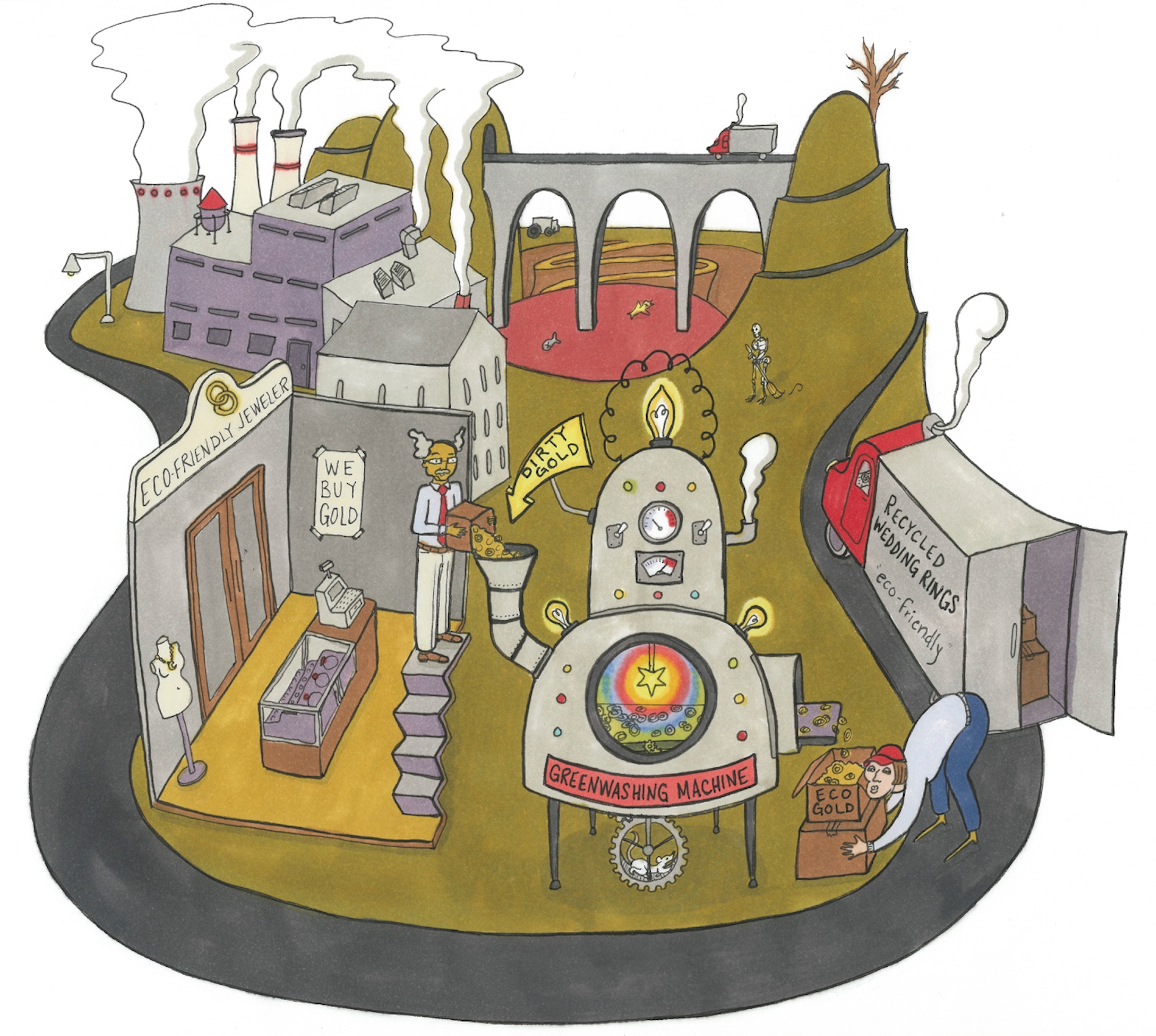
Yet Ethical Metalsmiths leaders continue to focus on recycled gold. On March 16th, 2018, Pomeroy posted this response to a jeweler who is looking for recycled metals:

Pomeroy founded theMercury Free Mining Challenge—so he understands that recycled gold has no impact on reducing mercury contamination.
Another example: Ethical Metalsmiths—the change agents, the people who could be promoting Fairmined Gold—are seemingly obsessed with finding casters who use recycled gold
And here again:

Whether a clasp is recycled silver or not is of no consequence to improving the lives of small-scale gold mining communities in Kenya or anywhere else in the world.

The focus on recycled metals diverts the energy for change away from products that actually benefit small-scale mining communities and the environment. It undermines the unique selling position of Fairmined or Fairtrade Gold in the North American market.
This continued emphasis on recycled gold, especially by Ethical Metalsmiths, is why I hold the view that Fairmined Gold as an initiative, particularly when contrasted to what is taking place in the UK, has failed to gain any real traction.
In Engeland, anyone who claimed recycled gold is ethical sourcing would be ridiculed. The Fairtrade Gold story, supported by the international brand, has created a new market narrative that has actually shifted how the public in the UK think about the purchase of a wedding ring.
Fairtrade Gold in the USA
By 2015, Fairtrade America, the new Fairtrade International affiliate filling the vacuum left by the secession of Fairtrade USA, had formed out of Fairtrade Canada. In April of that year, I signed on to be the first Fairtrade Gold jeweler in the USA.
In dialogue leading up to my certification, I requested that Fairtrade America adopt the small jewelers scheme that had been so successful in the UK. The small jewelers scheme is the critical entry-level option for small jewelers to use the logo and sell the gold without having to pay anything up front.
Fairtrade America would not adopt the scheme. Hierdoor, no one, not even those who contacted me and wanted to join the scheme, followed.
I paid $1,532 dollars to become a certified, license-holding Fairtrade Gold jeweler. After three and a half years, I am still the only license holder.
Take a look at this Google search for the key words “fair trade gold.” Fairtrade America is second on Google’s listing. They are paying for ad space related to the keywords “fair trade gold.”

Even through Fairtrade America pays for advertising on Google, they do not list Fairtrade Gold as an item on their website.
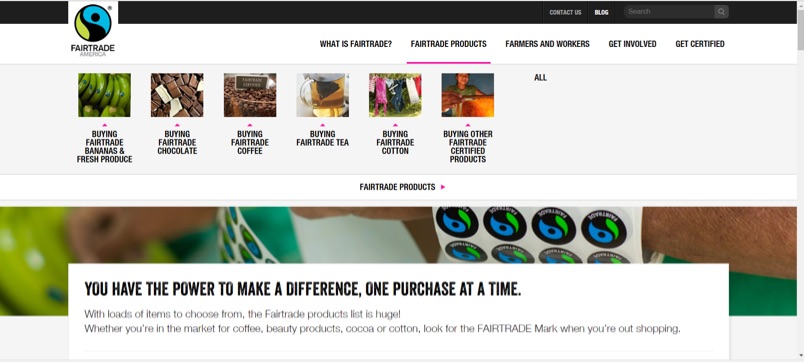
Just to be clear, if you click the far right, “Buy Other Fairtrade Certified Products,” gold is still not listed. Screenshot from summer 2018.
In 2015, I put Fairtrade UK in contact with Hoover and Strong and Rio Grande. Even though my small studio is the only Fairtrade Gold jeweler in the US, Hoover and Strong purchased 2 kilos of Fairtrade Gold in the fall of 2017 and another two kilos in July of 2018.
Hoover and Strong has always been years ahead of the rest of the jewelry trade in context to ethical sourcing. This is obviously a very smart move, given how the market is shaping up in Europe.
In the comparisons between Fairmined and Fairtrade Gold, those who advocate for Fairmined rightly point out that Fairmined pays a larger premium to mining communities: $4,000 US per kilo to Fairtrade’s $2,000. Based on this, their reasoning goes, Fairmined is the best choice for the miners.
I dissent.
Veel van de $2,000 difference supports the Fairtrade organization, their on-site audits at jewelry stores, and building their powerful global brand. We want a global movement, not a small movement. A global movement will improve the lives of millions of miners.
And for a global movement to take place, there needs to be a solid infrastructure in each country, which Fairtrade has already accomplished. The global Fairtrade movement, the Fairtrade brand, has demonstrably paid off in the market. As I have mentioned earlier—in the UK, Fairtrade Gold is the market choice because the brand itself is so much stronger.
If Fairtrade Gold had landing in the US five years ago, there is no doubt we would be seeing the same kind of progress here.
Bovendien, while Fairmined Gold does have the power of the Responsible Jewellery Council behind it, it also has the baggage. This acssociation by default means that Fairmined accepts that Responsible Jewellery Council members’ new “responsible gold” brand. (See the Fifth Russian Doll: Overlijden van de Fair Trade Diamond.)
In het kort, the co-branding of Responsible and Fairmined Gold essentially means that alleged atrocities of Responsible Jewellery Council mining companies(See the Fourth Russian Doll: Responsible Jewellery Council Chain Of Custody Scheme Exposed) are acceptable. To give a specific example, Certified member AngloGold Ashanti can conduct activities in Ghana shown in the video below without so much of a Mea Culpa.
I believe that any pioneer ethical jeweler runs a reputation risk by associating with a brand that would work within the Responsible Jewellery Council framework. Fairtrade Gold is by far the best choice, and it will one day land in the North American market just as it has in other parts of the world.
Ontdek de volledige Ethical Jewelry Exposé

**Alle schrijven en foto's zijn open source, underCreative Commons 3.0. Elke reproductie van dit materiaal moeten link terug naar de landing page, hier. Voor hoge resolutie beelden voor publicatie, contact met ons op bloot(AT)reflectivejewelry.com. **

